
When thinking of sewing and textiles, our first thoughts may be of large garment factories like those once prevalent in Downtown LA. These were often staffed by mostly women of color, usually immigrants from Latin America or other parts of the world, working tirelessly to produce our clothing. But the practice also evokes memories of matriarchs who carefully mend a pair of ripped pants, add a patch to a denim jacket, or make a dress for a sister’s quinceañera. Sewing can move beyond the utilitarian and into a place of care, of love. Every stitch reinforces the bonds of not just the fabric but also of the connections to things we hold dear. Every thread becomes an integral part of the fabric of our lives. It’s in these everyday essential threads where Erick Medel sources inspiration for his elaborate sewn ‘paintings.’
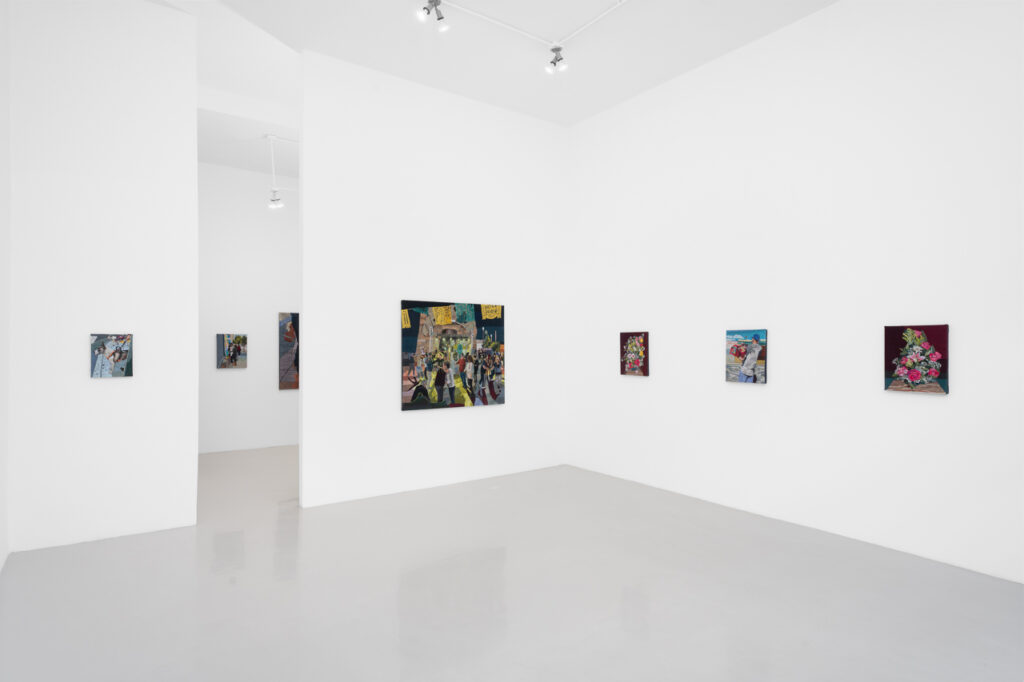
In his sixth career solo show— and first at Charlie James Gallery— titled “Vidas,” Medel presents a series of intimate portraits stitched with such painstaking detail that they resemble textured paintings from afar. His subject matter (except for three still-life flower arrangements that the artist said he did because “all painters have a still-life era”) portrays intimate moments within Medel’s community in Boyle Heights. The working-class people of color, along with their families and animals that make up the neighborhood, are documented with care and reverence that elevates and places importance on each subject. One such moment in the work titled Hold My Hand depicts a woman leading a child across the street. The tenderness and love of a mother for her child on their daily walk from school is felt in the scene, carried over into every stitch. Witnessing this simple moment between a parent and child becomes a document of care and community.
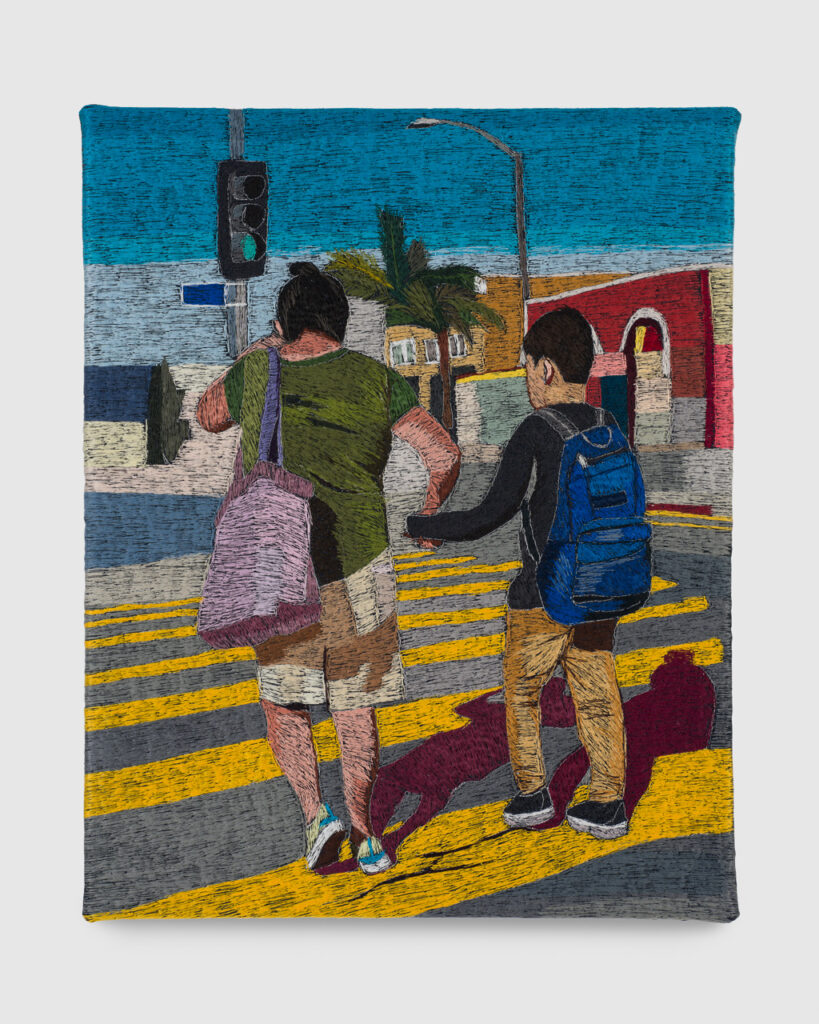
While many types of art incorporate stitching — such as crochet, knitting, hand-embroidery, quilting, assemblage, and numerous forms of indigenous textile arts that are all important both culturally and historically— Medel’s approach is distinct. He enlists the sewing machine like a paintbrush to meticulously blend hues and create compositions, transcending genres to “make it new,” a point American critic and poet Ezra Pound argued that every artist should do. This unique approach is significant because Medel does not consider himself to necessarily be an artist in the traditional sense of ‘painter,’ and yet his technique borrows from and innovates off of so many elements from the painting medium that the designation is undeniable.
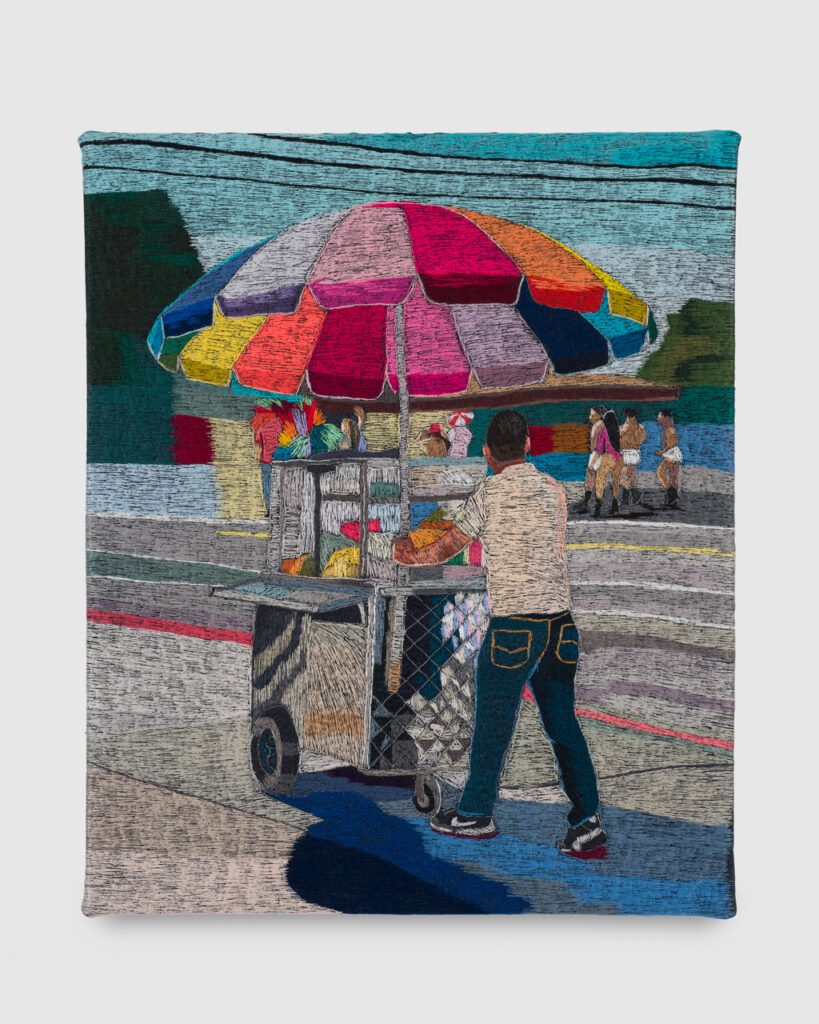
Medel originally studied photography at the Rhode Island School of Design, earning an MFA in 2018, and only began exploring sewing as a medium of expression in 2020. He would take quick street-style snapshots with his phone (to remain more inconspicuous) and later used those photos as preliminary studies for his compositions sewn onto denim. His early work showed promise, though pales compared to this current body of work. The beautifully crafted early pieces used spaced-out lines that resembled sketches. Now, his new series is much tighter, with every inch of the surface covered with thread, feeling more like finalized ‘paintings.’ Subjects have shadows composed of multiple colors of threads layered together like thin linear brushstrokes to provide the perfect color and effect. Even cracks in the sidewalk are jagged and meticulously rendered. Every strand is carefully manipulated to show a range of textures, from a dog’s soft and tousled fur in Walk Around the Block to the realistic, colorful panels of a street vendor’s umbrella in Frutas Frescas (Pride parade 2023).

Medel’s admiration for the eastside of Los Angeles is palpable in his work. He emphasizes the sense of community and culture that permeates the neighborhood. Here, public art seamlessly integrates into everyday life, with new murals appearing on nearly every corner. Pintor documents one of these murals and plays with a three-point perspective, making the mural feel like a scene straight from Guanajuato, Mexico.


An immigrant himself, Medel also noted how his neighbors, of all ages and backgrounds, embrace and support one another. He has observed how people come together for community events, much like those he has experienced in Mariachi Plaza. This very place inspired the stunning night

scene depicted in the artist’s largest work of the show, Sonidero Night. Here, youthful couples dance happily while seniors look on and engage in conversations. In exceptional detail, single threads depict light emanating from the stage, gently grazing the figures below. His personal connection to the scene further lends an emotional connection in the work inviting the viewer into his world.
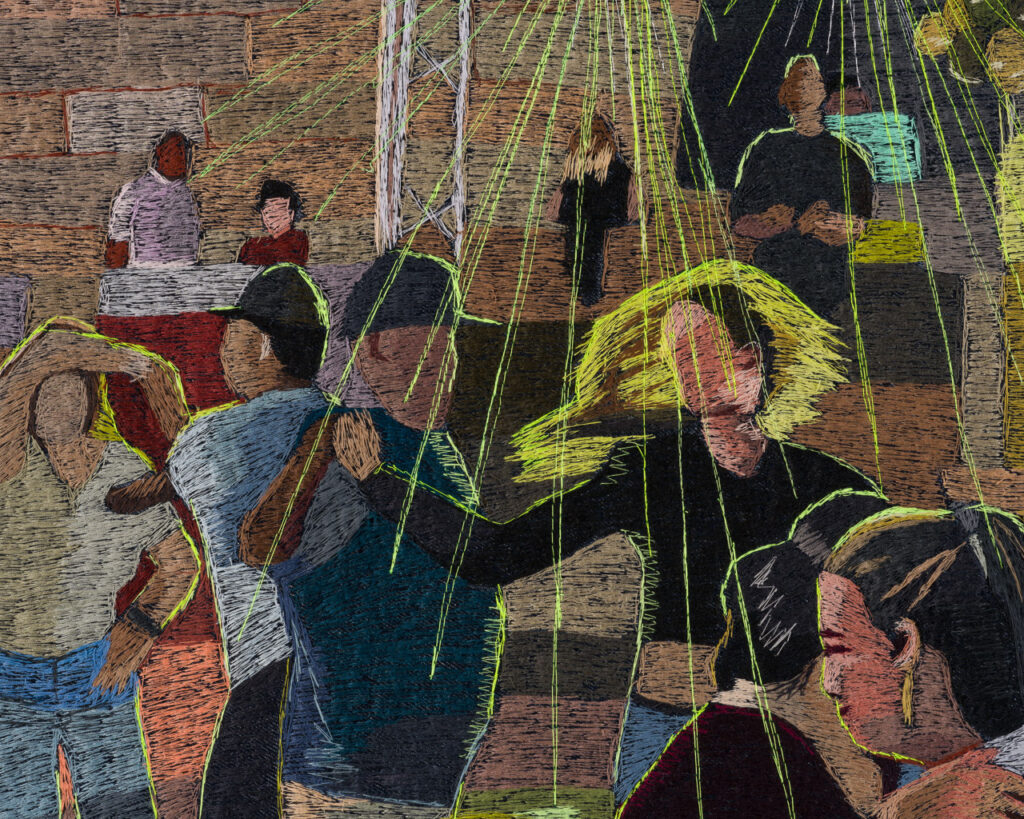
By thoughtfully depicting the everyday lives of his fellow residents, Erick Medel captures their essence and elevates their significance, ensuring their stories are visible and acknowledged within the larger canon of art — a crucial affirmation. His painterly approach to the sewing medium, pushes the genre to new limits while maintaining its deeply empathetic tradition that enriches the portrayal of his community.
We look forward to future evolutions of his artistic process.
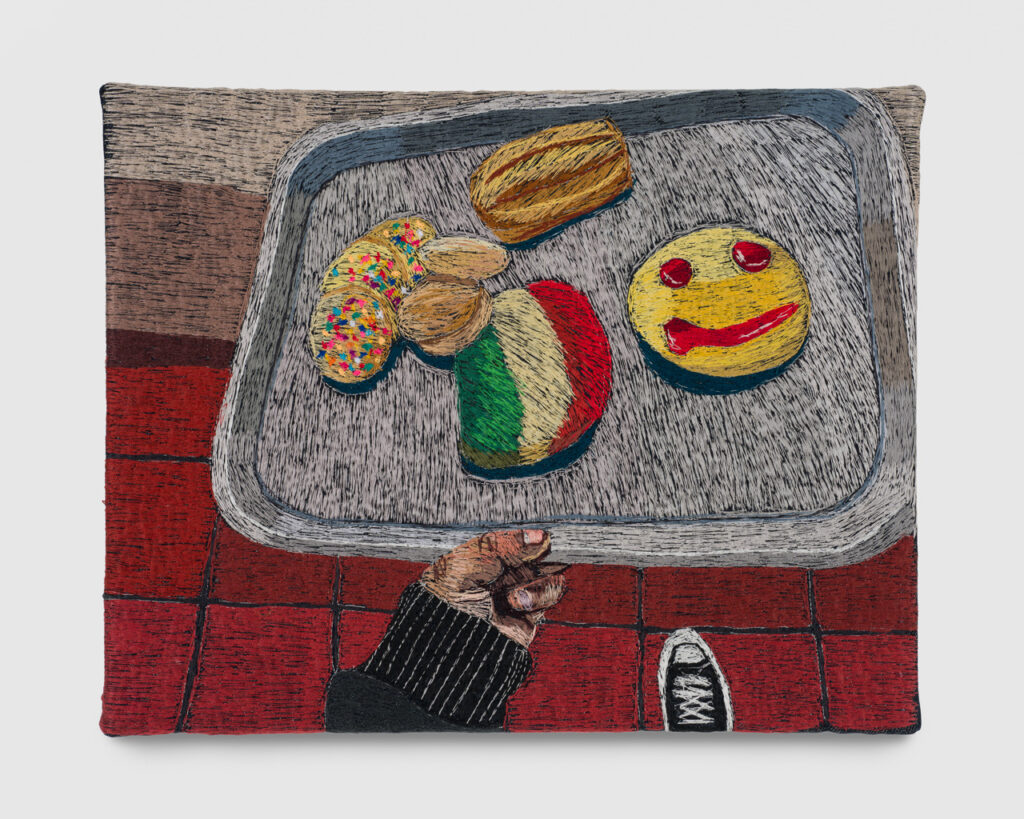
Erick Medel
“Vidas”
July 20 – August 31, 2024
Charlie James Gallery
961 Chung King Road Los Angeles, CA 90012

